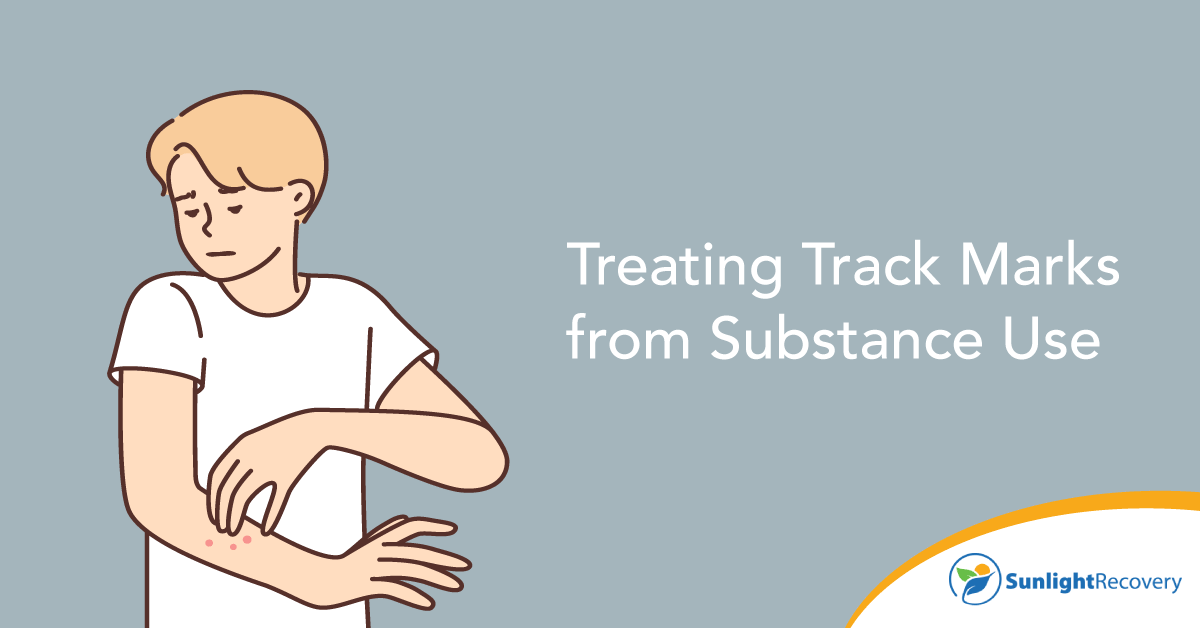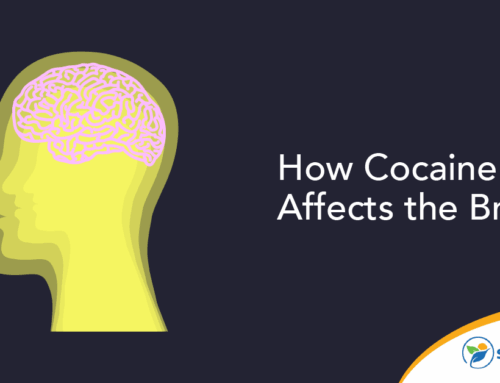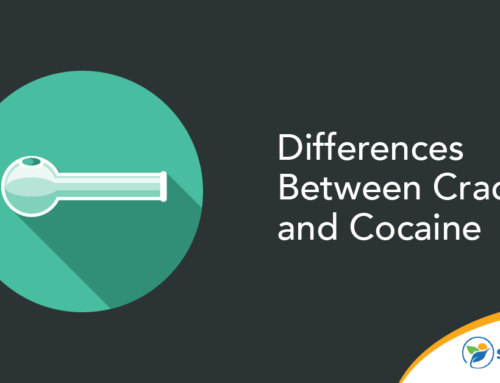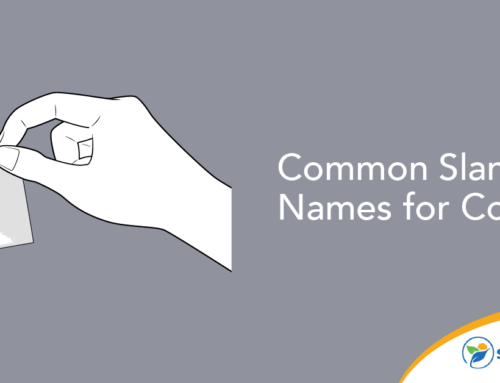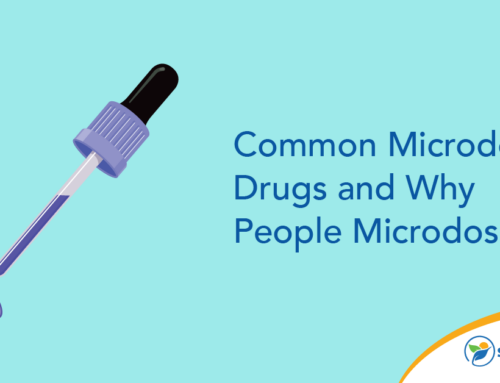Track marks can be a concerning sign of potential substance abuse if you see them on someone else. For someone struggling with addiction, these marks can be a constant reminder of their substance abuse or their inability to get clean on their own. But drug scars can heal, inside and out, if you find the right path to recovery.
More than 3.6 million people in the country inject drugs — around 1.5% of the population, making this a concern for many.
What Are Track Marks, and What Causes Them?
Track marks are the puncture wounds and related scarring caused by injecting drugs. Initially, the wounds may look pink or red with an obvious puncture in the middle. Over time, healing track marks can take on the appearance of bruises or lesions, with darker coloring around the site that’s blue, black, purple or brown. Eventually, old track marks can appear as discoloration or as puckered and textured scars on the skin, especially if the same site was used for injections repeatedly.
A single injection doesn’t necessarily leave a long-term track mark, but chronic use of drugs via injection is more likely to leave them. Other potential visual signs of track marks can include:
- Veins that are darker than normal or darker than other veins that are visible on a person’s body
- Darkened skin around the area of the injection sites, known as hyperpigmentation
- Indented vein areas due to weakening of the vein structure from prolonged abuse of injectable drugs
- Marks that indicate a cluster or linear pattern where someone has injected a vein frequently in various locations
Where Are Track Marks Commonly Found?
Typically, the most common area for track marks is on the arm. The inner arm, especially near the crook of the elbow, is an easy place to reach and affords fairly effortless access to veins. This makes it a location of opportunity for many people who struggle with a drug addiction.
However, drug scars and track marks may also appear on other parts of the body, including the legs, neck, hands or feet. Eventually, the area on the arm or any other part of the body that’s been injected multiple times may become too painful. This can cause someone to move to another area of the body for injecting drugs. In cases where someone is trying to hide the signs of their drug use, they may inject in areas others won’t ever see, such as under the clothing or even between the toes.
What Drugs Are Associated With Track Marks?
If you’ve seen what you think are track marks on someone you love, you might wonder about track mark meanings — specifically, what type of drug abuse they might indicate. Some drugs associated with injection sites include fentanyl, heroin, morphine, cocaine, methamphetamine and even prescription drugs, which can be crushed and dissolved in liquid to create an injectable substance.
Treatment Options for Track Marks
Healing drug scars can be important to someone as they seek recovery. The evidence of visible wounds can be an unwelcome reminder or even a trigger for someone who’s working to live a sober life, and someone in recovery may worry that their track marks could lead to being judged by others. It might also be meaningful to see track marks healing, as it can indicate the length of time it’s been since someone last injected drugs — a sort of physical reminder of how far the person has come in recovery.
Immediate Treatment Options
Immediate treatments typically address actual wounds and infection risks. Wound care, including cleaning and treating wounds with topical agents, is common. In a clinical setting, caring providers may offer guidance on how to keep the area clean and treated as injection puncture wounds heal. They may also provide topical medications and information about diet and other factors that can help promote healthy, healing skin.
Some immediate treatment choices may be made to reduce the appearance of long-term scarring. In some cases, creams or other options may be applied to new track marks to help the skin heal more fully without as much scarring. Ice may be used to reduce bruising that can happen within several days of injections.
Long-Term Treatment Options
Options for healing track marks long-term are somewhat limited. Protecting the area with sunscreen when you’re outside and using high-quality moisturizers and other skin care products can help reduce the appearance of scars. Visible scarring may also fade over time until it’s not as noticeable. In some cases, laser procedures can help address pigmentation issues from track marks, and in extreme circumstances, plastic surgery may help with some scarring.
Preventive Measures for Harm Reduction
Not all intravenous injections are related to substance abuse, and even when they are, there are some steps people can take to reduce track marks and other, more serious, potential harm. It’s critical to use clean needles, for example, to reduce the risk of complications such as infection. Cleaning any injection site first with alcohol prep pads is also a good habit, and not using the same site to inject medications all the time can allow areas to heal properly before you inject at that place again.
Of course, if you’re caught in a cycle of abusing drugs in any way, including injecting them, the best preventive measure against future harm is to seek addiction treatment.
Psychological Support for Recovery and Healing
At Sunlight Recovery, we provide holistic support for recovery and healing. If you or someone you love is struggling with a substance abuse disorder, we can help. Our programs, which include inpatient and outpatient care as well as medically assisted detox, are designed to provide a safe, secure place for individuals to recover.
In addition to addressing immediate needs, such as caring for open track mark wounds, our teams work with individuals to address the long-term requirements associated with recovery. We help you get through the early withdrawal periods more safely and comfortably than you can on your own, and then, we work with you through therapy and other treatment options to build a foundation of support for a healthier life. Contact Sunlight Recovery today to find out how we can help.


